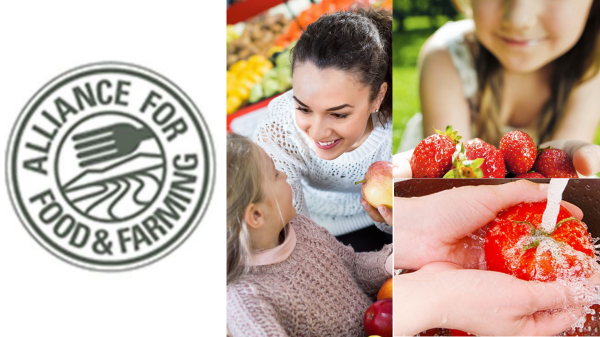This update was distributed by the Alliance for Food and Farming April 16, 2024.
Sorry consumers but you must suffer through another “produce shoppers guide.”
Yes, a different group will release another guide that recommends what produce to buy organic. But in previous releases, this “guide” contradicts the other “guide,” which was released last month adding more confusion for consumers.
If it wasn’t so frustrating, it would almost be amusing to picture someone walking through the produce aisle trying without success to reconcile these irreconcilable “guides.” One would almost become paralyzed with the competing recommendations: “This guide shows it’s OK to buy this fruit if it is conventionally grown, oh, but wait, this list says I should purchase only organic versions.”
Both groups’ “shoppers guides” state they base their so-called lists on the U.S. Department of Agriculture’s Pesticide Data Program results. Well, guess what? The USDA found that over 99 percent of the foods sampled had residue levels well below Environmental Protection Agency safety standards with 27% having no residues at all.
USDA summarizes its results this way: “Based on the PDP data, consumers can feel confident about eating a diet that is rich in fresh fruits and vegetables.”
So, how about no “lists” then? No clean/dirty, stop with high risk/low risk. How about no risk/high reward message since decades of nutrition studies show the immense health benefits from eating a diet rich in fruits and vegetables. And, most of those studies were conducted using conventionally grown produce.
One example: If half of Americans increased their consumption of conventionally grown fruits and veggies by a single serving each day, 20,000 cancer cases could be prevented annually. That seems like something consumers should know.
Instead of referencing these lists, maybe review an analysis from toxicologists with the University of California’s Personal Chemical Exposure Program instead? Can I buy blueberries for my child? According to the analysis, a child could eat 5,287 servings of blueberries in a day and still not have any effects from residues. So, yes! What if I want to sneak some kale into my child’s smoothie? They could consume 7,441 servings of kale in a day without any effects from residues. Conventionally grown apples? Can your child eat 340 apples in a day?
This expert analysis clearly shows how low residues are, if present at all. And how nonsensical these guides/lists really are.
And the dilemma for media outlets is apparent too with this new “guide.” If you publicize one, how can you publicize the other if they are contradictory? How about covering neither since they aren’t science-based? Or, why don’t you just cover the actual USDA PDP report when it is released annually? Very few reporters or outlets ever provide consumers with what the government report actually says, which is always very puzzling.
Here’s the Alliance for Food and Farming’s shoppers guide, which we base on advice from health experts everywhere: Buy what fruits and vegetables you enjoy and are affordable and accessible for you. Choose organic and conventional because both are safe and can be eaten with confidence but choose to eat more produce every day to prevent diseases, improve physical and mental health and increase your lifespan.
And, the only shopping guide/list a consumer ever needs is the one they create for themselves and their families.
Visit safefruitsandveggies.com and @safeproduce to learn more about produce safety.
For more information, please contact:
Teresa Thorne: tthorne@foodandfarming.info



